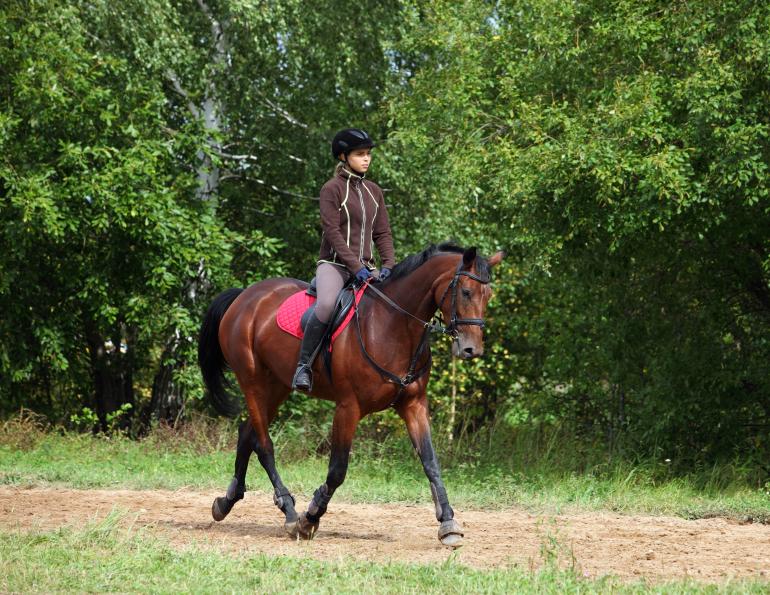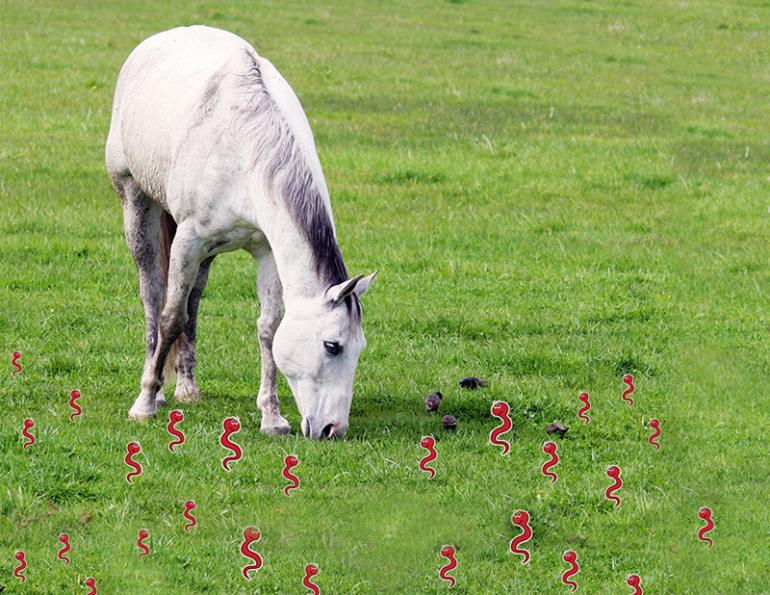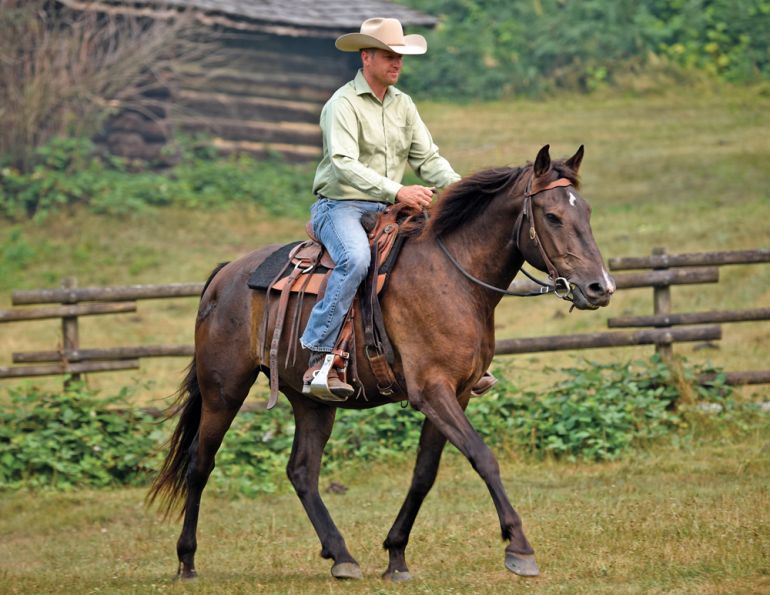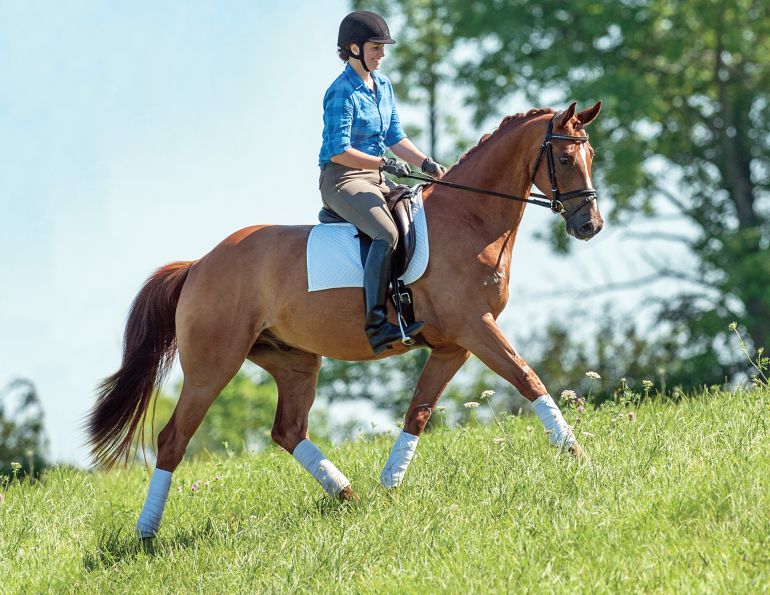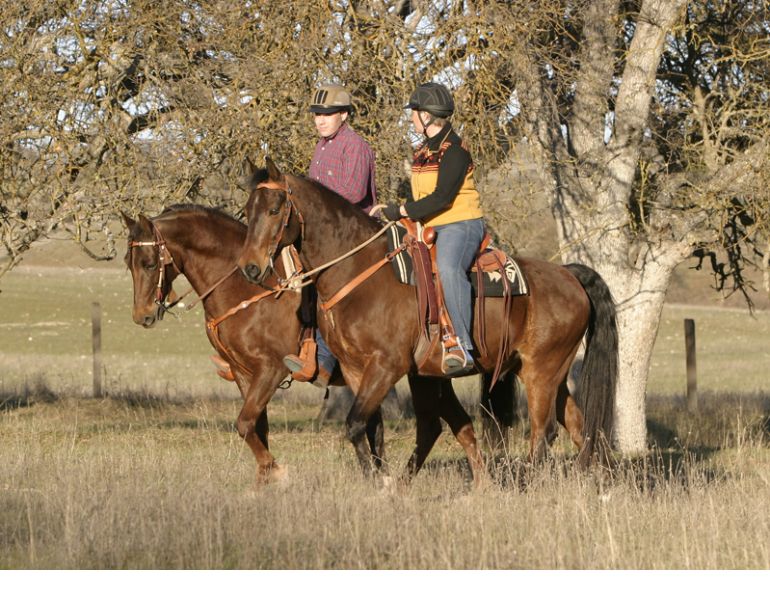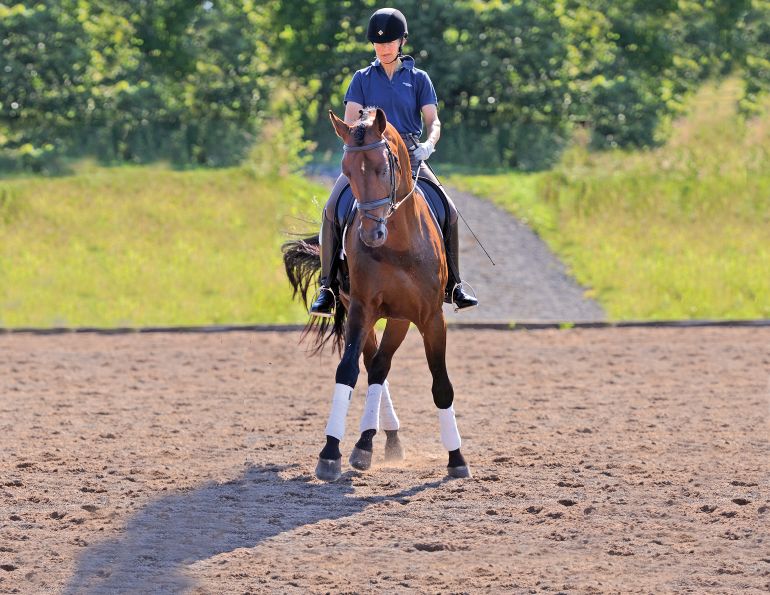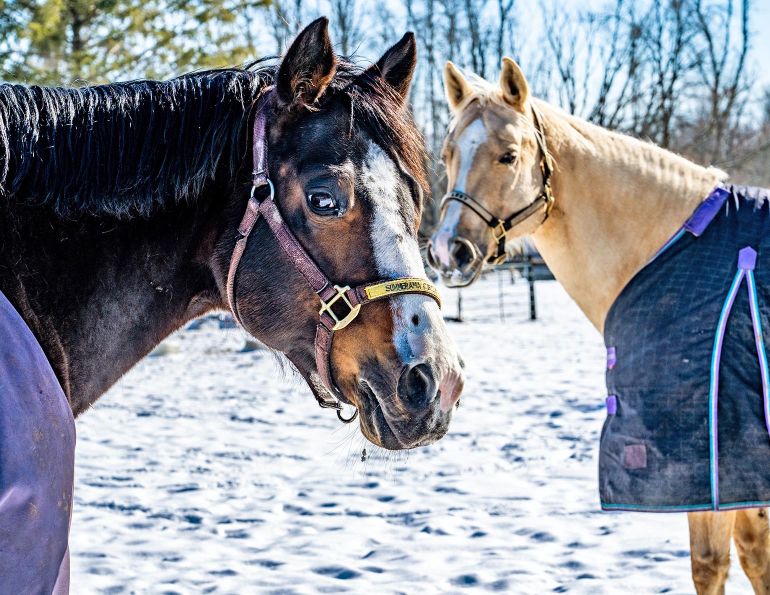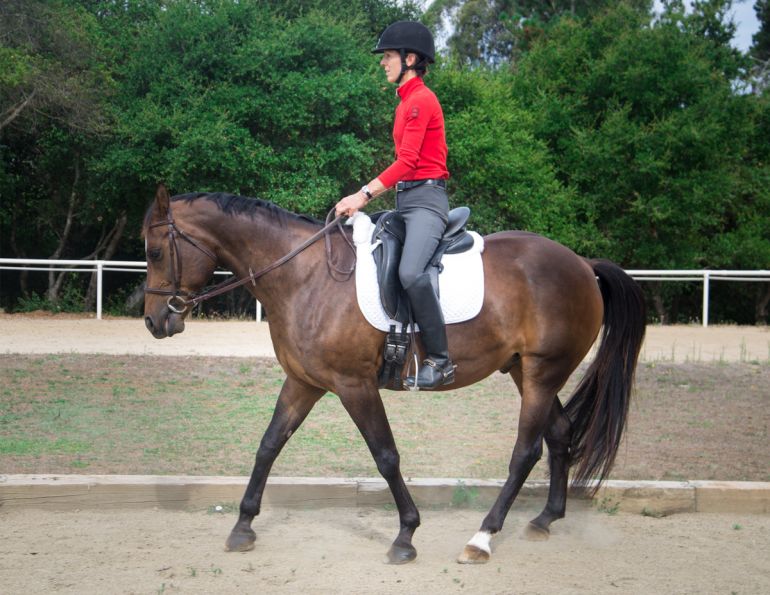Where Should You Start?
By Jec A. Ballou
When spring finally arrives, the sunny riding season ahead can greet riders with both excitement and anxiety. Where do I start, you might wonder as you calculate how unfit your horse has become from a winter of being off work. How long will it take to ease him back to fitness? What sorts of exercises and timelines should I use? In this article, I’ll answer these questions plus offer a simple schedule in addition to some rules you never want to break.
As a starting point, let’s consider when a horse loses the fitness he might have acquired the previous season. Any time a horse’s exercise routine drops below three 45-minute work sessions per week for a period longer than four weeks, we consider him to have lost a majority of fitness. If he reaches 12 weeks working less than three times per week, his fitness has zeroed out, including any baseline or foundation. For our purposes in this article, we will assume most readers are starting from this point.
Your priorities for the initial six weeks will be the cardiovascular system and core stability muscles. Your workouts should focus on basic conditioning rather than schooling specific skills and maneuvers. These workouts will remain less than 40 minutes and aim to deliver a low to moderate amount of cardiovascular stress, while also emphasizing calisthenics-type exercises to engage the horse’s postural muscles. I will offer a sample schedule to meet these goals below.
Keep in mind that you do not need to work your horse at a gasping rate of effort in order to achieve gains. In fact, this would be counter-productive. Muscle enzymes, capillaries, and plasma volumes are not yet properly developed in order to benefit from these kinds of workloads. Instead, you would raise stress hormones and fail to improve how the body utilizes oxygen, which should be the focus. If you monitor your horse’s heart rate, it should hover between 120 and 140 beats per minute for the middle portion of your ride between the warm-up and cooldown.
During this initial cardio phase, your strength training should only take the form of slow-moving, controlled calisthenics routines rather than exercises that activate the horse’s big locomotive muscles like the back, rump, or hamstrings. The connective tissues that stabilize and support these larger muscles — and the joints near them – are not toned at this point and will respond with tension and stiffness trying to play their role.
Due to this state in the early phases of conditioning, the horse is prone to developing incorrect neuromotor patterns or faulty proprioceptive signals, which is another reason we avoid challenges that trigger big muscles. Remember, conditioning is not just about muscles and bones and lung capacity. It is just as much about training the nervous system.
There is no need to rush. More challenging strength training as well as higher cardiovascular efforts can, and will, happen after the first six weeks. Your workouts in weeks one through six will follow this pattern – basic cardio plus calisthenics to improve stabilizing muscles.
A sample schedule will look like the following:
Week 1: Flat ground work three times per week at a moderate walk for 30 minutes, plus five minutes of calisthenics (choose from list of Calisthenics Exercises at the end of this article);
Weeks 2-3: Flat ground work three times per week at a moderate walk for 40 minutes, plus five minutes calisthenics;
Weeks 4-5: Flat ground work three times per week at moderate walk/trot 40 minutes, plus five minutes calisthenics.
At this point, you have gradually eased the horse’s metabolic system back into a regular aerobic routine, but he is by no means fit. His cells will be more efficiently shuttling blood and oxygen around the body as plasma volumes increase, clearing out wasteful byproducts of exercise that create soreness. His muscles will have increased their capillary density and enlarged the fibres needed for the work at hand. And perhaps most importantly, the low to moderate workload coupled with consistent calisthenics will have woken up and stimulated his postural muscles, which otherwise would have remained dormant.
Related: Colic Prevention - Introduce Spring Pasture Slowly

During the first six weeks, your workout priorities should focus on basic conditioning with a low to moderate amount of cardiovascular stress. Photo courtesy of Jec A. Ballou
Related: Walking Workouts for Your Horse
Now the real work begins. From week six onward, you will be gradually increasing the duration and/or intensity of workouts. Please note that when making workouts harder in any exercise program, you do not increase intensity and duration of exercise simultaneously. During a given workout, you only increase one or the other. For instance, you can make a workout harder by either making it longer or by adding difficult exercises to your normal session length. A sample of the next few weeks follows:
Weeks 6-7: Flat ground work four times per week at moderate walk/trot for 40 minutes. One day per week can include schooling over ground poles not to exceed five minutes. Continue calisthenics three times per week.
Weeks 8-9: Moderate walk, trot, and canter four times per week for 40 minutes; two days per week can be ridden on hilly terrain. One day per week can include schooling ground poles not to exceed eight minutes. Continue calisthenics three times per week.
Weeks 10-12: Moderate walk, trot, and canter four to five times per week for 45 minutes (one of these sessions should last 70-80 minutes). Include two days of calisthenics per week and one day of schooling over ground poles.
At this stage, your horse will be well primed to reach his full fitness level, which is still several weeks away, but the above schedule gives you a good basic starting place. From here, you will want to add strength and conditioning routines specific to your chosen discipline at least two days per week, and you will also want to develop a variety in the duration of each workout. Most of your workouts will remain around 45 minutes, but one or two per week should run quite a bit longer while one remains shorter than 35 minutes. Your goal is to work the horse at different effort levels day to day, hence these varying times. This article does not have space to delve into sport-specific training, but regardless of what your chosen sport might be, every horse needs a well-developed base on which to build.
The schedule I have offered here does contain some flexibility. For example, how you spend your riding time in weeks one through six is up to you — riding in a flat arena, a pasture, down a flat road, and so on. There are, however, some non-negotiable rules when it comes to reconditioning after downtime, so we should discuss those.
Rule 1: Modulate Intensity Levels
After week four of a conditioning plan, you want to vary the difficulty or intensity of each session in order to avoid consecutive days of working at the same effort level. Neuromuscular reactions become dulled when they always perform at the same effort, and conditioning effects stop happening. Also, tissues cannot recover and rebuild from harder workouts if they are not given occasional easy sessions. I like to follow a day-to-day pattern of Easy-Moderate-Hard-Repeat.
Rule 2: Don’t Rely on Respiration
When considering your horse’s perceived effort level, do not rely on sweatiness or how hard he is breathing. Respiration and sweating are a means of shedding heat. These are indeed partly affected by his energy expenditure, but they are not accurate predictors of fitness. These systems are influenced by a number of outside factors including extra body weight, humidity, thick hair coat, stress, or tension. Many riders inaccurately judge their horse’s fitness by how much he huffs and puffs during a ride, which gives a very incomplete — and sometimes plain wrong — assessment.
Related: Single Pole Exercises
Rule 3: Vary your Surfaces
Optimal muscle recruitment relies on optimal proprioception, which is the origination of signals for how much tone to employ given the position of each limb and joint position. When a horse works routinely on a single surface, his proprioception suffers. This means the sensory system that governs his motor system becomes dull and it misfires. Horses must be schooled on a variety of surfaces. If the bulk of your riding happens in an arena, spend at least one other day each week somewhere else — the grass paddock, a firm road, treading on wood chips. Or if you ride on trails most of the time, spend a day each week working in a sandy arena.
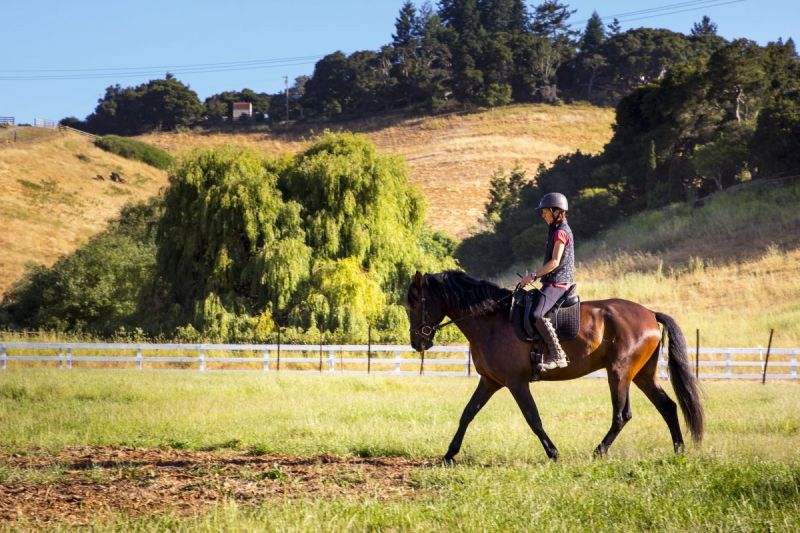
School your horse on a variety of surfaces. If most of your riding is done in an arena, spend at least one other day each week on a different riding surface, such as a grass paddock, a firm road, or on wood chips. Photo courtesy of Jec A. Ballou
Rule 4: Double Up When Building Up
When you are in the building-up phase of your conditioning program following the initial six-week phase, it is almost always better to use two shorter sessions per day rather than a single more intense session. This allows the horse to get maximum fitness gains from each session without taxing soft tissues and metabolic functions past the point of fatigue, at which point they stop making improvements. Also, during a second session, the horse’s muscle cells adapt to using metabolic waste such as lactate, left over from previous efforts as fuel. This flushes these byproducts from the tissues to prevent soreness while simultaneously helping the horse adapt to more efficient fueling of muscle contractions.
Related: Pasture Perils - Plants Toxic to Horses
Rule 5: Follow Workout Ratios
In a balanced training and conditioning program, the warm-up and cool down each day should combine for 20 percent of your total schooling time. In fact, an appropriately gradual warm-up and cool down each day determines whether or not a horse gains any conditioning effects from the session. If his metabolic and neurologic systems are not adequately primed and then flushed out afterwards, they either develop the wrong adaptations or none at all.
Another ratio to keep in mind is that sport-specific schooling should form only 30 percent of your total riding time. If you ride for an hour, that means you will spend only about 20 minutes drilling maneuvers or exercises for your given sport, never more. Many riders spend too much time schooling for a discipline at the expense of meeting the horse’s ongoing conditioning needs. The remainder of your time after accounting for warmup and schooling should be spent on basic cardio work, flexibility routines, and strength training (two times per week).
Maintaining a horse’s fitness after working through the guidelines in this article will require that he continue to work at least three days per week at 70 to 90 percent maximum effort. You can be flexible with his activity type and include lots of cross-training; just ensure that he meets the adequate frequency and effort level in the sessions you do choose.
Never fret unduly about periods of time when the horse will lose fitness, such as during inhospitable riding seasons. Just be sensible each time you need to build him back up. By following the information in this article you will find the task straightforward and successful, and your horse will thank you.
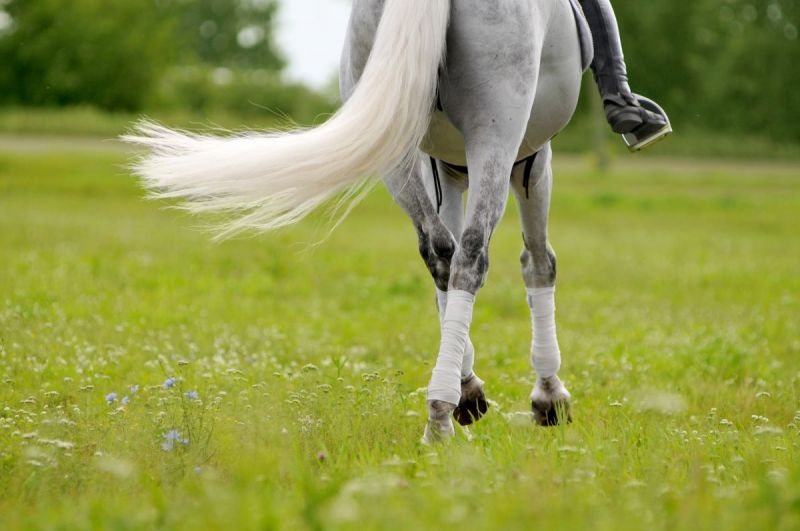
Heart Monitor
A heart monitor will give you the most accurate means of measuring your horse’s cardiovascular effort. Making a weekly routine of riding with a heart monitor will help you learn to keep your horse in the right zone to improve his fitness, and it will likely reveal some surprises along the way. It will eliminate the exaggerations and guesswork we often apply to different stages of our horse’s fitness. Equine heart monitors can be found for less than $100, fit easily under the saddle/girth, and are simple to use.
During the basic cardio sessions outlined in this article, your horse’s heart rate in trot and canter should be between 120 to 150 beats per minute. During short, harder intervals of work in the later stages of the program, it will be between 160 to 180 beats per minute. For our purposes, you do not want the beats per minute to exceed 180 for any period of time longer than several seconds. On the other hand, when the beats per minute drop below 100 (even when walking), he is not making any fitness gains.
Monitoring your horse’s heart rate on an ongoing basis gives you valuable feedback on his fatigue levels day to day, fitness gains, and tells you how he is tolerating the work.
Calisthenics Exercises
Choose three to five per day to execute on the days noted in the conditioning schedule:
- Backing up unmounted 60 steps
- Lateral cervical stretching using either your hands or carrot baits
- Walking slowly over high raised poles (mounted or unmounted)
- Pelvic tucks and/or belly lifts
- Walking and bending around a ten-meter circle with a very low stretched neck position (mounted or unmounted)
- Tight serpentines (unmounted)
- Walking briskly over ground poles placed randomly around an area of varying surfaces, i.e., grass, sand, gravel.
Related: Spring Horse Health Checkup
Related: Creating an Equine Fitness Program
Related: Trail Tips: Accessorizing the Trail Rider
Photo: Shutterstock/Horsemen



